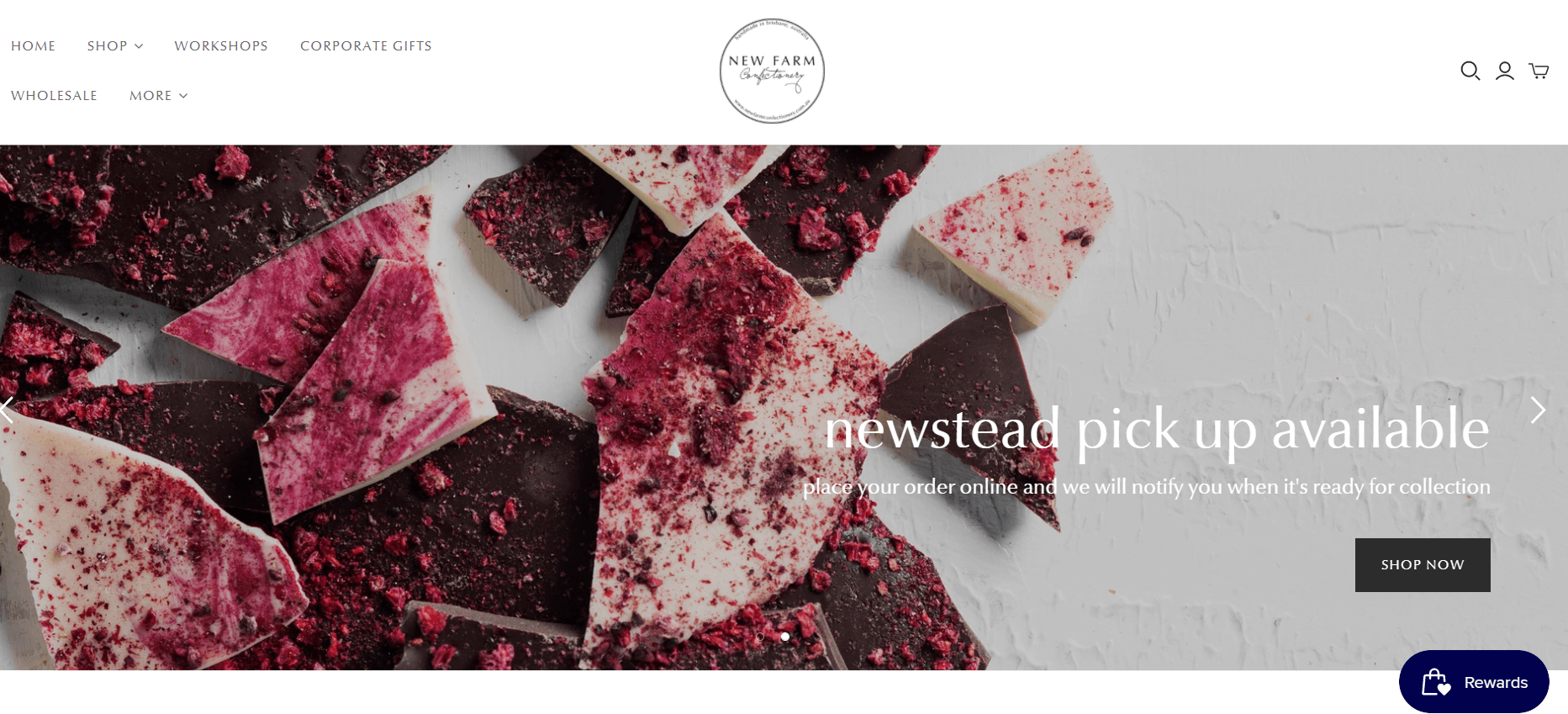
Marketing
The Unboxing Experience: Rode Microphones
October 17, 2017
Recently I started creating my own marketing podcast and in the spirit of doing things properly, I thought 'why not spend $150 on a microphone'.
Learn More
Did you know that the total retail eCommerce sales worldwide amounted to over USD $4 trillion, with this figure set to eclipse USD $6 trillion by 2024?
Did you know that Australia ranks tenth for eCommerce website sales worldwide?
Did you know that eCommerce sales account for over 18% of retail sales worldwide, with this figure set to rise to over 22% by 2023?
OK, OK, that’s enough trivia for one day, but the point we’re trying to make here is that eCommerce businesses have cemented themselves as a key marketplace channel for people to come and purchase their needs, wants and desires.
Now we aren’t saying that your typical brick & mortar retail store is going to be an archaic memory come 2023. No, no, no. What we’re saying is that if your business sells a product or service, in order to maximise your conversions and chances of success, your online presence, particularly the user experience, needs to be top-notch so that you not only attract new customers but you retain loyal ones too.
Over the last few years, we have seen some awe-inspiring eCommerce websites that literally grabs and shakes the money out of potential customers for their product or service! We’ve also encountered some downright dreadful ones that are either plodding along, barely keeping their head above water, or, more times than not, now cease to exist.
We assume out of these two scenarios you want to be the former, which is why we have put together our top 7 tips for an effective eCommerce website design that is destined for greatness. So let’s get to it then, shall we!
KISS. No, not the band. Keep It, Super Simple.
Have you ever been on a landing page that is just an absolute cluster f**k? You’re being harassed with popups that seem to multiply with each one you close, there’s banner ads for Viagra everywhere, and it’s impossible to discern any semblance of brand identity as every Pantone of colour has somehow made it onto the page.
If you answered yes, then that’s what we call a TISS, Terrible Insufferable Shopping Site.
If you’re in the process of creating your eCommerce website, make sure to keep your design clear, clean and simple, with the focus squarely being placed on a smooth and effortless sales experience for your customer.
Take Tesla, for instance. In the space of about 3-5 minutes and a handful of clicks, you can have a custom ordered Model 3 ready for pickup. Simple.

So, make sure to not create a TISS but instead KISS!
Branding is one of the most crucial facets for a successful business. Your brand represents YOU! It represents your promise, your product or service offering and helps you connect with your customers through your perceived brand promise.
A great eCommerce web design must incorporate your brand – think logos, colours, font styles and any other quirks that separates you from the competition. If you’re still trying to find your identity, ask yourself these four questions;
If you’re seeking inspiration, have a look at New Farm Confectionary’s web page. From the moment you click onto their page, you know you have entered a decadent realm of premium confectionary that is lovingly handmade from only the finest of ingredients.
How do they do it, you ask?
Their logo is simple yet exudes a level of grace and sophistication that a Swiss chocolate house would be proud of. Not only that, but they also let their products do the talking for them with stunning product photos showcasing the high quality of their goods. As you progress further down the page, you’ll even notice the effort they have put into their packaging and the finer details that each one has.

One of the most common mistakes we see clients make is that they try to design and implement an eCommerce store that they like and want. Now, if you’re going to be the only one buying from your website, then that’s a great strategy to take! But let’s be real; ideally, you are going to have thousands of people coming through your online shop seeking out your product or service offering, so make sure you are designing an eCommerce page that suits them.
This again reverts back to our KISS marketing tip mentioned earlier. Consumers aren’t complicated people; they just want a seamless shopping, value-laden experience. So, when creating your eCommerce website, consider these five design tips;
When you start thinking like your customer, you can then begin anticipating what they want to experience from your eCommerce website.
There’s nothing worse than being misled or deceived when undertaking an online purchase. I’m sure we’ve all experienced it when your much anticipated item of clothing that carried the suspicious price tag of $23.67 finally arrives only for you to realise the sizing chart must have been relevant for Smurfs.
Honesty has been one of the hardest barriers for eCommerce websites to overcome, but those that have succeeded are some of the most trusted online brands today.
Take The Iconic. In the space of a decade, it has become one of Australia’s most trusted and visited fashion eCommerce company that is due to rake in $1 billion in sales in 2021. And do you know what one of the four golden lessons that its CEO Adam Jacobs relates its success to?
Actions speak louder than words.
These actions refer to its speedy shipping, free returns, authentic fashion brands, excellent customer service, real product images and unbiased customer testimonials.
What do these all have in common? Honesty and trust.
It’s no surprise that the eCommerce sector is turning into a giant. This fast-paced growth, in a way, is thanks to a variety of eCommerce providers that each offer a way in which you can sell your product or service online.
The four with about 60% of the total market share are WooCommerce, Shopify, Magento and BigCommerce. Each of these platforms varies in significant areas such as;
As you can see, these aren’t just run-of-the-mill platforms that are all the same! Do your research so that you are utilising the best one for your eCommerce needs.
Don’t let the acronym of SEO scare or confuse you! We know it can be one of those complicated, slow-moving processes that you just can’t find the time for but let’s make this web design tip easier for you.
Search engine optimisation is crucial if you are to rank favourably on search engines like Google. A consistent and well-executed SEO strategy will result in more exposure for your website, increased views and better reach.
The three major aspects of a sound SEO strategy that you should be focused on is this;
What we mean by this is, if you were, say, selling the best damn fried chicken that even the Colonel would be envious of, you’re not going to be using keywords associated with veganism, are you? Of course not, that’s not your target audience (unless you’re just trying to lead them into temptation….you monster)
Take a look at this product description.

Now take a look at this one.
.
I think we can all agree that whoever wrote the first product description, i.e. “100% cotton”, was promptly fired and replaced by someone who actually put the effort into giving customers deep insight into the particular item.
Not only does this entice customers into buying the product, but it also does wonders for your SEO as search engines will have a clearer idea as to what it is you’re selling and how best to rank you.
As eCommerce becomes more prevalent, so does the innovation of the platforms that these eCommerce websites operate from. As we mentioned before, there are several excellent eCommerce platforms to choose from. Each of these platforms offers an array of useful tools to further enhance your sales objectives.
One of these tools that you should take advantage of is the built-in SEO tool that can help improve your site. Don’t be fooled; these tools aren’t going to write your content or product descriptions for you! Instead, they offer valuable insights into the overall health and success of your website whilst identifying opportunities and weaknesses too.
With more than half of all internet shopping being conducted from a mobile device or tablet, it’s imperative to ensure that your eCommerce website can be viewed on a range of devices. Should you fail to do this, you risk losing a huge chunk of potential customers who will simply go shop with the competition.
We wanted to keep this last point short and sweet because it’s really that simple, but here are a few more stats to SCARE you into making sure you don’t forget to be responsive!
We know it can be an exciting time launching a new product or service to the market. The eagerness of being online so that you can start selling being an all-too-common reaction. But instead, just take your time. Do your research. Follow a sound plan and strategy. And tick off these eCommerce website design tips that we’ve provided for you here! It’ll be sure to save you a lot of time, money and hassle in the future.
At Cemoh, we have a team of expert eCommerce marketing strategists with years of digital marketing experience who would love to assist you with your eCommerce needs. Should you like to contact us to assist with guiding you through building an eCommerce website, then feel free to get in touch with us here.

Marketing
Recently I started creating my own marketing podcast and in the spirit of doing things properly, I thought 'why not spend $150 on a microphone'.
Learn More
SEO
Many digital marketers are promoting voice SEO as being the next big thing for search engine optimisation, but is it?
Learn More
These days, many businesses want to have as little direct contact with customers as possible. Discover how to create Facebook Phone-Only Ads here.
Learn More